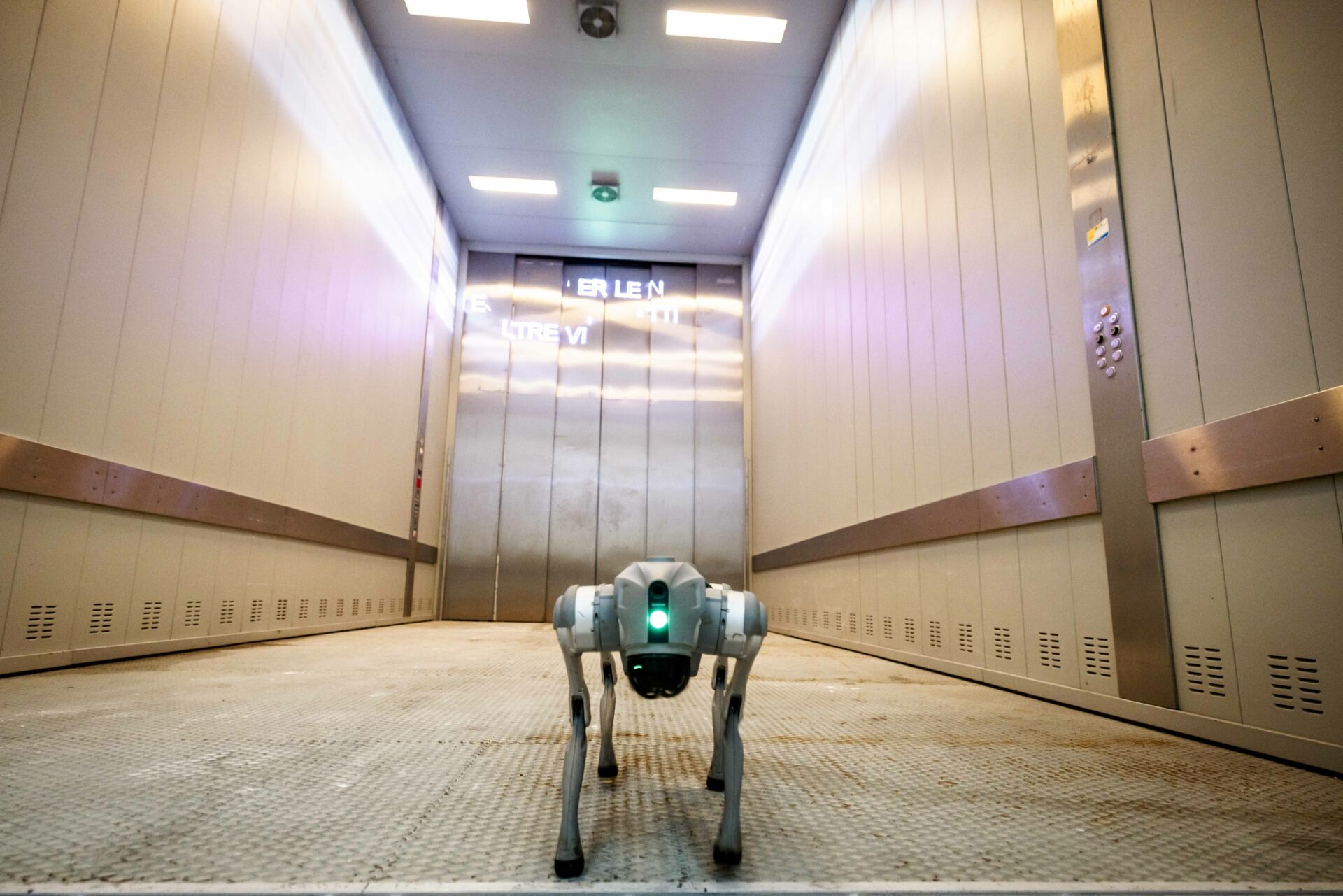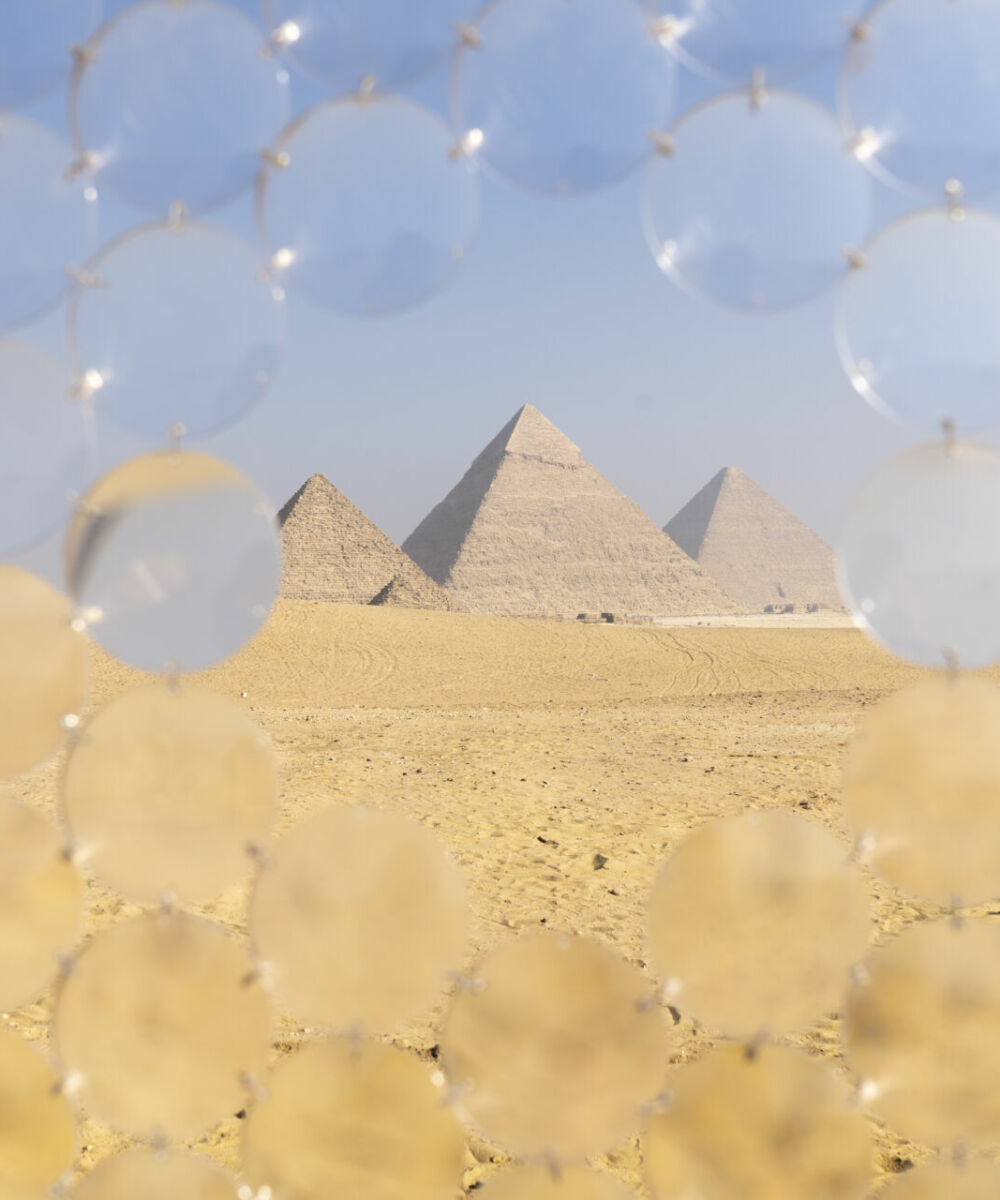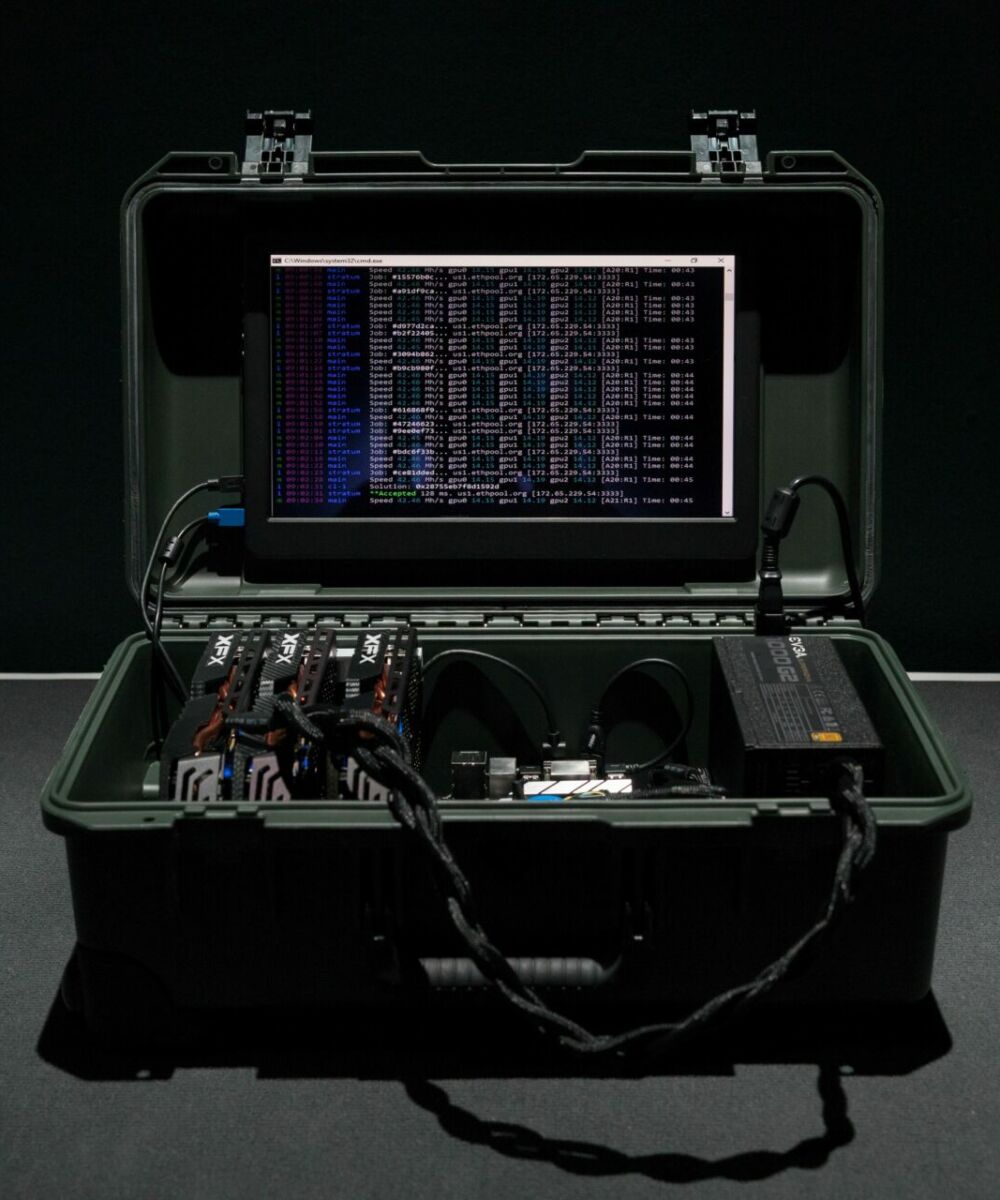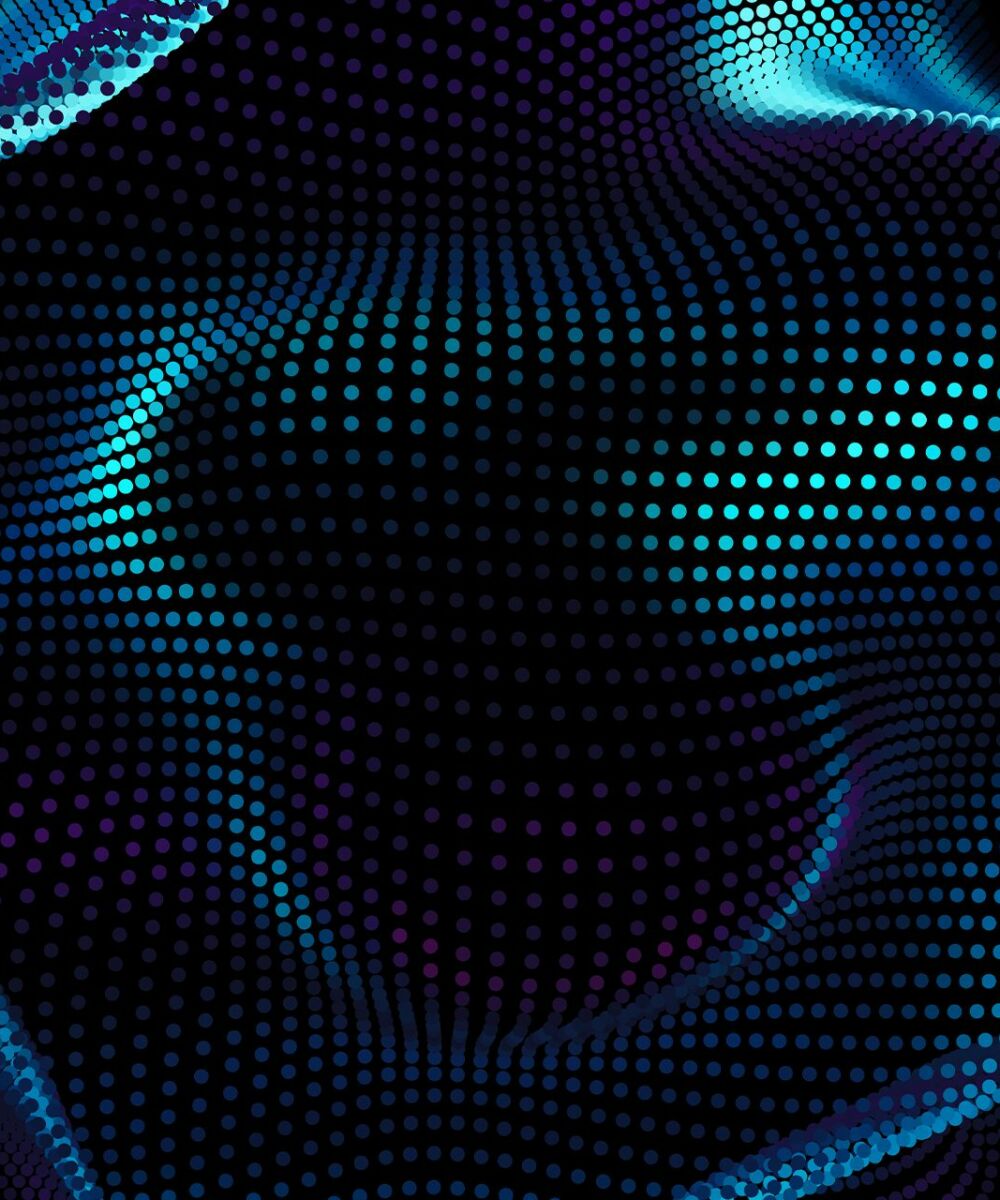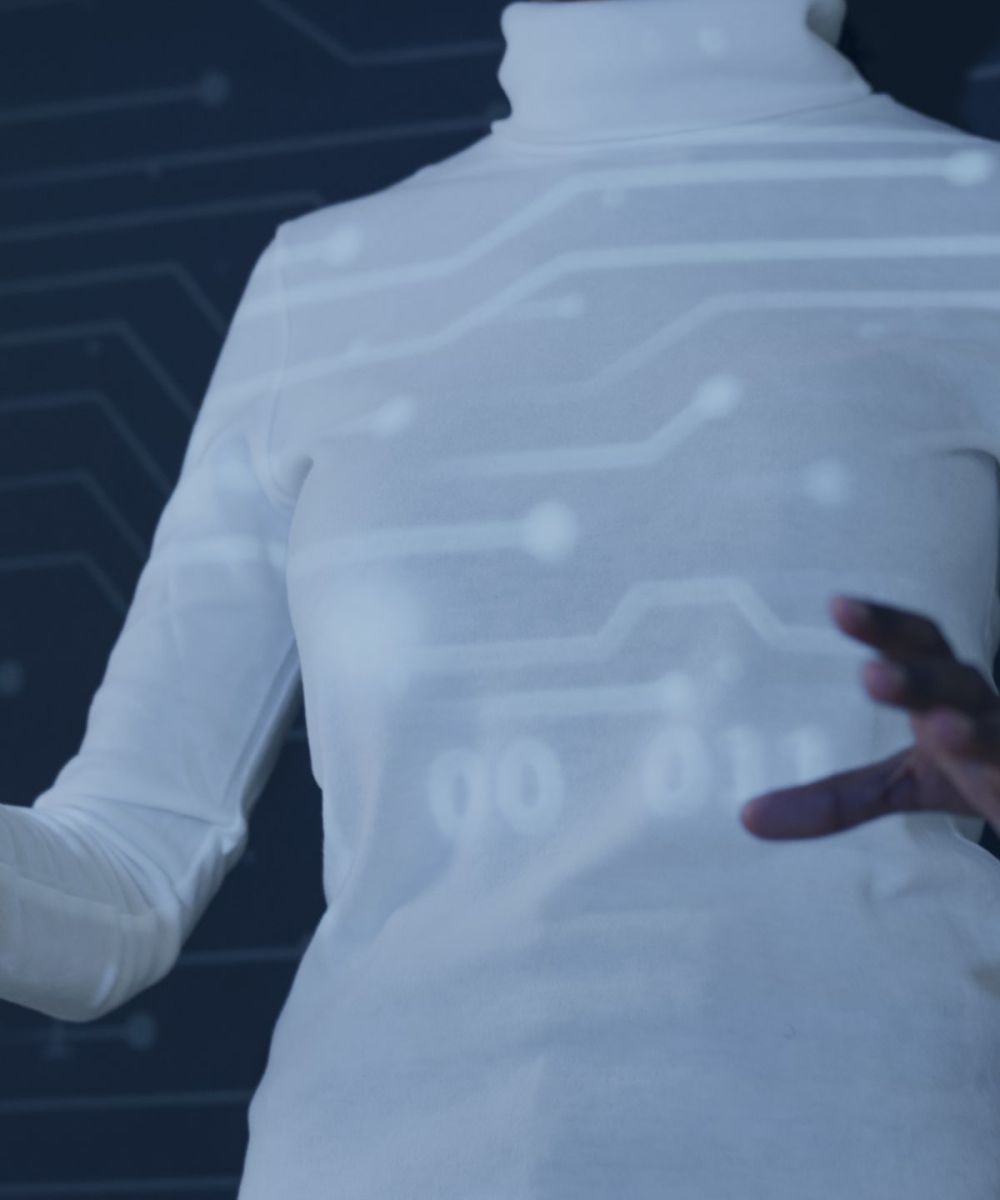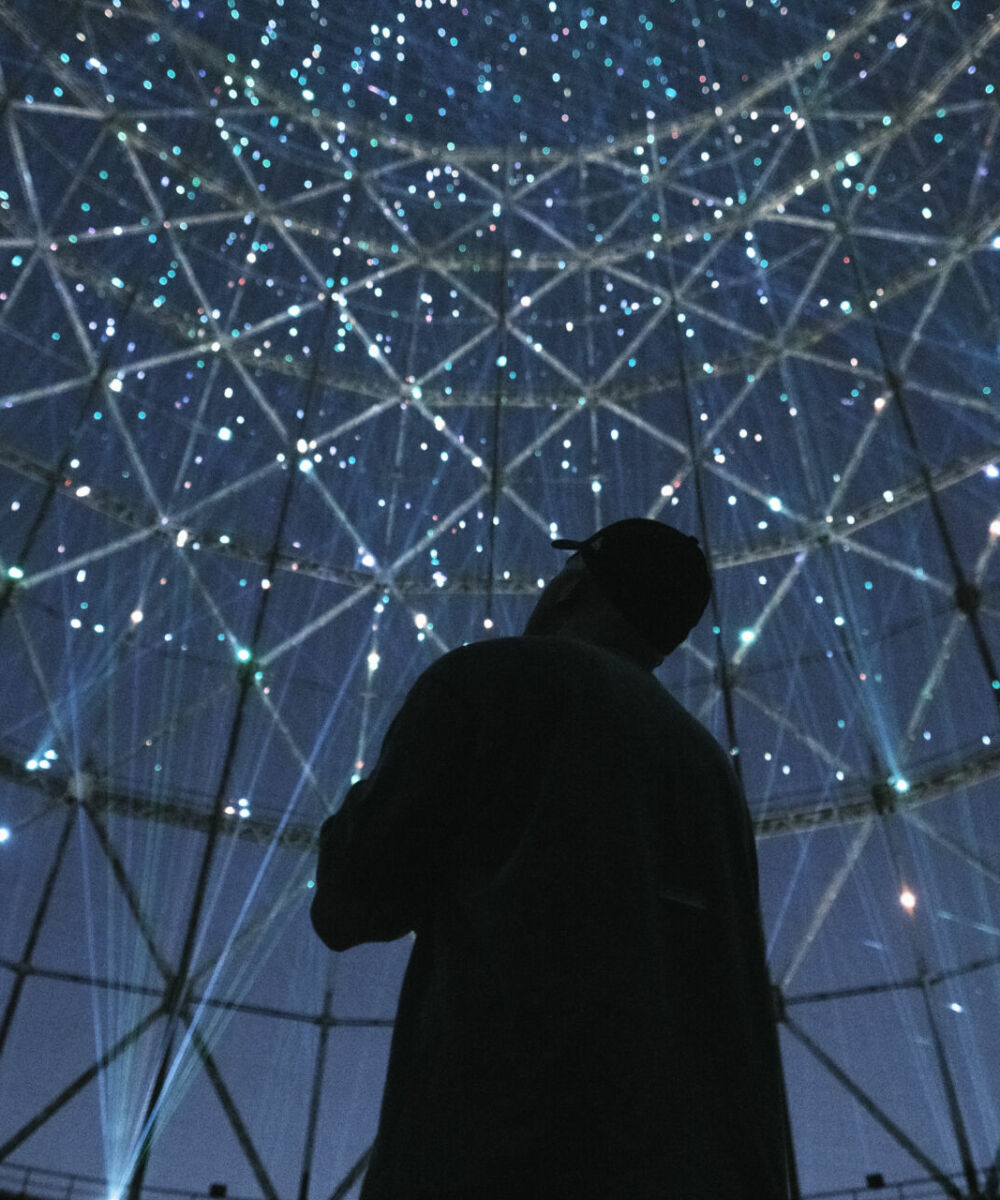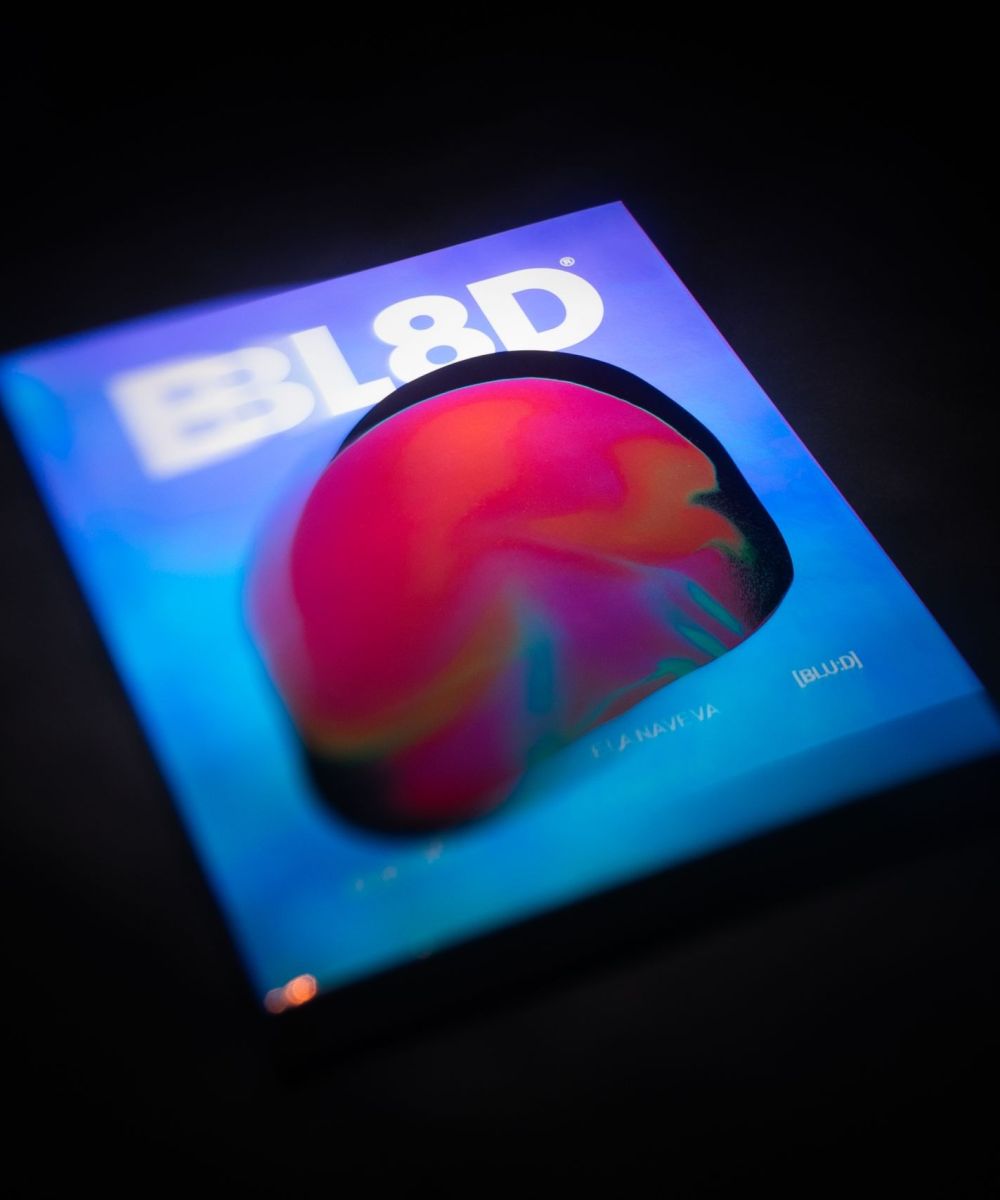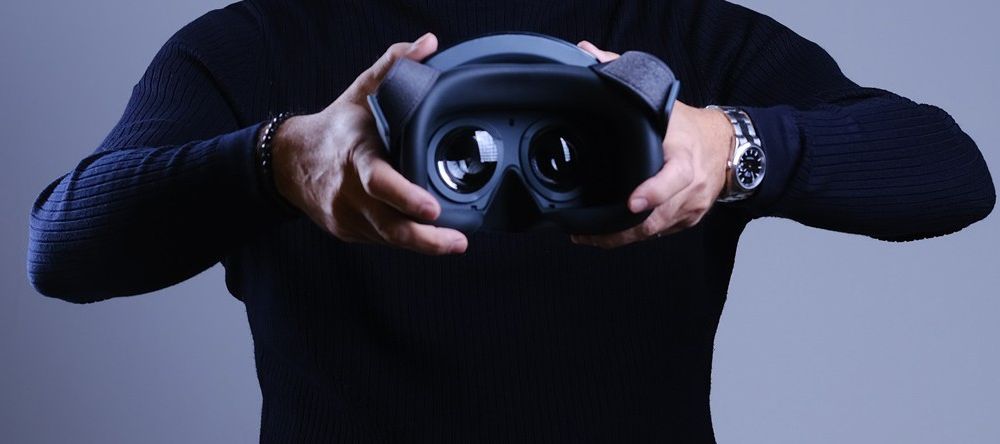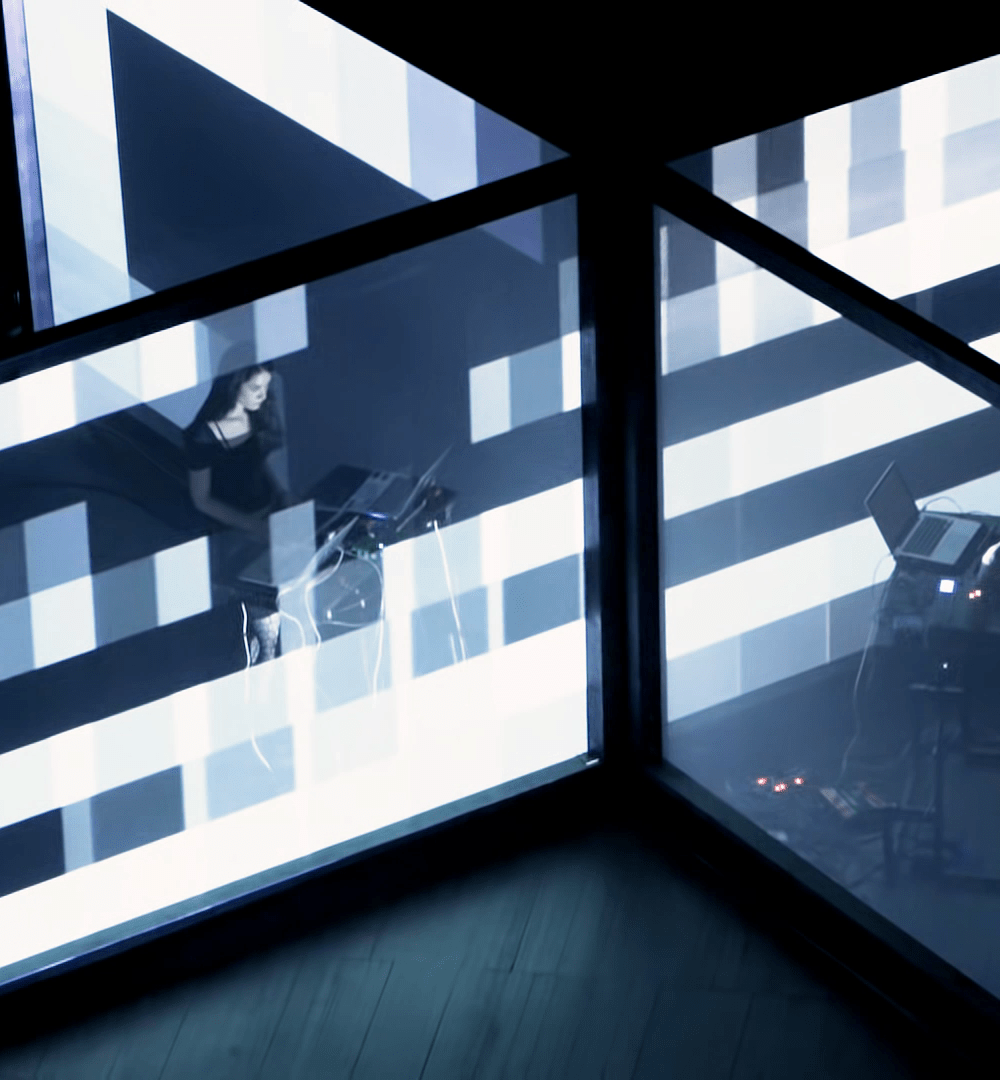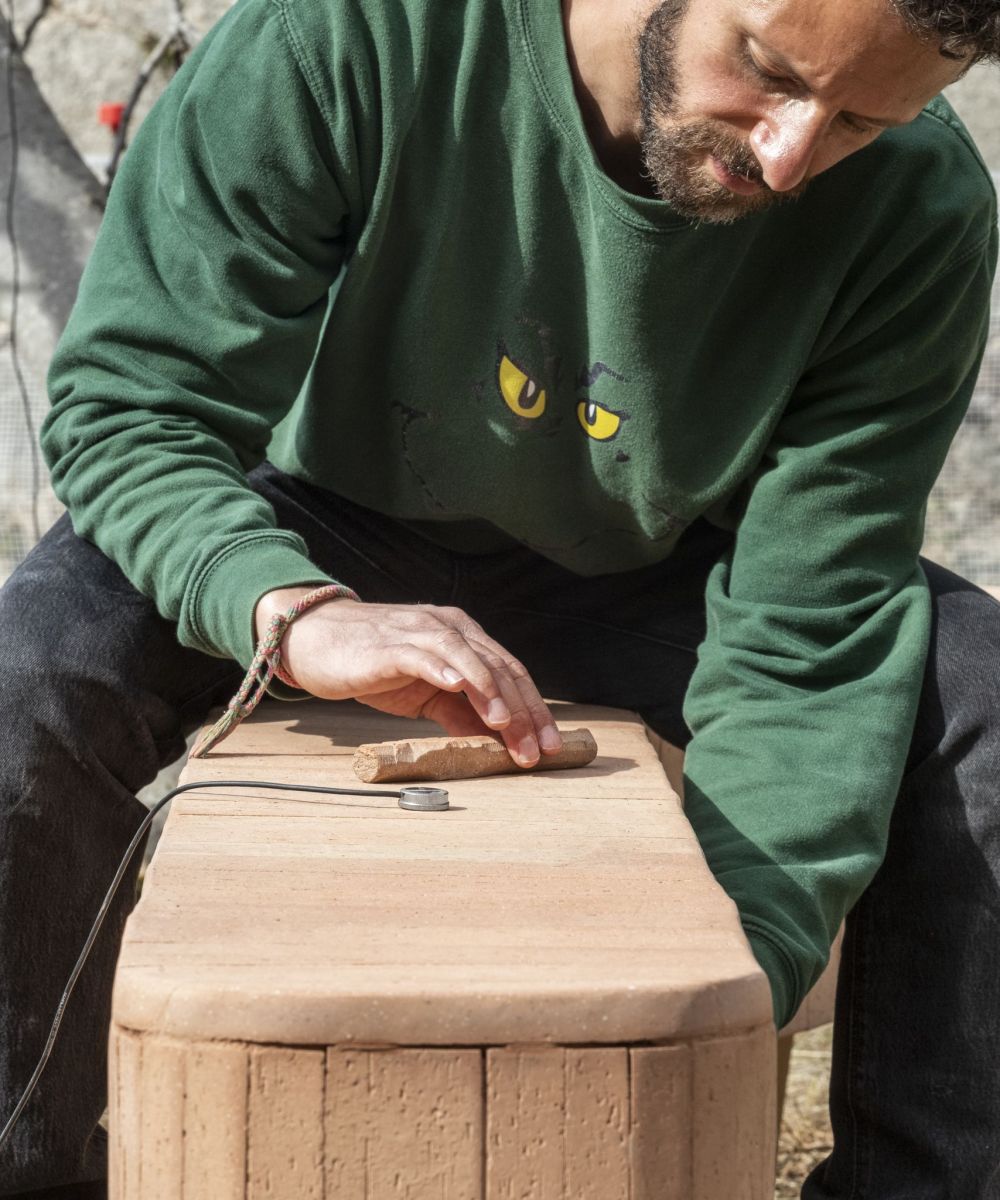The cyberpunk and existentialist art of Riccardo Benassi lands at MAXXI
by Alessandro Mancini
A robot dog performs a dance routine while a laser projects apparently incomprehensible phrases in English and Italian on a steel wall.
We are not watching a science fiction movie- we are at the MAXXI museum, and more precisely on the first floor in the Gian Ferrari room, inside a freight elevator. In reality, the performance we are watching is part of the work, ASSENZAHAH ESSENZAHAH (2024), created by Riccardo Benassi for the MAXXI BVLGARI PRIZE, the prestigious international award sponsored by the renowned Roman jewellery brand.
Born in 1982, Benassi is a visual artist who has adopted an interdisciplinary approach, mixing texts, sounds and new technologies as he explores the relationship between nature and the digital world. He was born in Cremona, but now lives and works between Bergamo and Berlin. Benassi has been teaching Sound Design at the Politecnico delle Arti in Bergamo since 2013, at IUAV in Venice since 2022, and has been a guest lecturer in Visual Arts and Curatorial Studies at NABA in Milan since 2019.
Benassi’s artistic research was based on the cyberpunk, rave and industrial ‘subculture’ of the 1990s, later moving towards an existentialist-type philosophy, where language, body, architecture and new media meet in a futuristic context.
His reflection is centred on the impact of new technologies on human, social, and environmental relations and on the way in which they change cultural production and consumption.
Benassi’s works are mainly composed of site-specific, performance, and video-essay installations, in which he speculates on the overlapping of life, online and off, the relationship between technology and nature, human memory and digital archives, social networks and sentiments.
All these references and themes can be found in ASSENZAHAH ESSENZAHAH, where two robot dogs perform choreographed routines created by the artist and programmed by the engineer, Edoardo Todde, with the support of the Complex Systems Laboratory in the Department of Electronics and Telecommunications at Turin Politecnico. During this routine, on the steel walls of the freight elevator, a laser light projects an internal monologue, translated into English by Allison Grimaldi Donhaue, which alludes to the way our digital traces construct permanent funerary monuments, destined to endure on the web long after our lives are over. With this work, the artist invites us to reflect on the impact of new technologies on human, social and emotional relations.
The work is further enhanced with a musical piece composed by the artist. The pounding rhythm is incessantly repeated throughout the entire performance, creating a hypnotic effect that transports spectators into another, almost unearthly dimension, generating a neutral space in which the boundaries between humans and artificial beings dissolve.
To understand how Benassi reached this point, we must go back and examine his personal and artistic journey.
Already with his Daily Desiderio (2018), a site-specific installation composed of a painted aluminium structure mounted with a screen displaying a white led text, the artist examined the influence of technology on the perception of time and mortality. Benassi explains: “Throughout the history of mankind, technological development has taught us that the arrival of each new machine in society, and to an even greater extent with mass diffusion, bursts forth with a new potentiality that is liberating and normalising at the same time. The existentialist perspective allows us to establish a balance within this paradox, no matter how subjective or communitary it may be”.
On the other hand, when creating Daily Dense Dance Desiderio (2023), the artist was given advance access to the beta version of GPT-3 (the predecessor of ChatGPT that we use today), and explored the boundaries between human creativity and artificial intelligence. “The possibility of acknowledging the idea that a machine could simulate aspects of my creative process led to an explosion of my psychic ecology, at least at the beginning. Then over time I realised that all prompt-based systems are actually past-based: in other words, the machine was able to simulate the Riccardo that had existed up until that moment, but not the person I am today”.
Benassi’s research is strongly focussed on the influence physical space has on the creativity of an artist, comparing the ‘rigour’ of the studio with the greater freedom experienced in a domestic context, as in the case of his environmental installation, Techno Casa (2013). In fact, the concept of space strongly influences the artist’s reflection on the hybridisation between technology and humanity: “Beginning with the assumption that we are always off and online at the same time, we could say that the element we have in common is space, which we share with the other members of our species. Reflecting on space is therefore a way to speculate on what unites us”.
“Beginning with the assumption that we are always off and online at the same time, we could say that the element we have in common is space, which we share with the other members of our species. Reflecting on space is therefore a way to speculate on what unites us”
In his live-performance Dancefloorensick (2022), the title itself is a neologism that combines the words ‘Dancefloor’, ‘Forensic” and ‘Sick’, evoking a fusion of complex sensations and meanings. In his video-essays, the humming sound, which could refer to the noise produced by Big Data, standardised language, or even the buzz made by drones and respirators, is transformed into a poetic flow and harmonious music. How is it possible? Benassi explains: “It is precisely the flow that ensures transformative continuity in a digital context, which instead is scattered with emotional peaks. I can’t tell you how the fragmentation finds harmony, if not by transforming itself into a work, and the process does no favours: my body is an antenna, my life is a scapegoat”.
Therefore, sound design is a key element in many of his projects, because sound allows the artist to scrutinise the bond between sensorial perception and conceptual reflection. “I work on several elements at the same time: for example, I often choose the words I write according to the sound they produce when they are read, and in turn, sometimes I change the sound track according to the words I write… Jenny Holzer is right in saying: All things are delicately interconnected. I believe that music, and all the more so, music to dance to, or at least, to sway to, is the simplest method for achieving earthly happiness”.
In Benassi’s artistic journey, exceeding limits is another central theme which, at the present time, means having to confront the increasing presence of algorithms and automation in our daily lives. “Growing up, I told myself that I would concentrate on doing things that nobody else could have done in my place. First of all, this was useful for me to understand who I am, and in general, on a time-space, proprioception level. I feel it is becoming more logical to ask oneself this question: “Is there anyone who can do it better than I can?”. This includes non-human, synthetic entities:”Is there anything that can do it better than I can?”
With ASSENZAHAH ESSENZAHAH Benassi shows how he has reached his artistic and philosophical peak, reaching a perfectly comprehensible form of expression, where the human and digital elements blend together in a single inseparable entity.
“This journey took me years,” concludes the artist, “the idea landed in the best possible place – it found its home in a freight elevator – and I am extremely happy with what people are saying about it after their experience”.
Alessandro Mancini
Graduated in Publishing and Writing from La Sapienza University in Rome, he is a freelance journalist, content creator and social media manager. Between 2018 and 2020, he was editorial director of the online magazine he founded in 2016, Artwave.it, specialising in contemporary art and culture. He writes and speaks mainly about contemporary art, labour, inequality and social rights.


